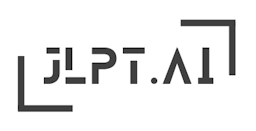

N1
音読み:ma, matsu
訓読み:matasu, sasu, kosu
マma
マツmatsu
また.すmatasu
さすsasu
こすkosu
Rub, friction
Imagine a person vigorously rubbing their hands together, creating friction and heat. This action symbolizes the kanji '摩' and its meaning of rubbing or grinding.
The kanji '摩' is a relatively less common character that may appear in advanced JLPT materials, especially at the N1 level. It is important to understand its meaning and readings to tackle higher-level kanji and reading comprehension questions.
彼は石鹸で車を摩っている。
He is rubbing the car with soap.
かれはせっけんでくるまをまっている。
kare wa sekken de kuruma o matteiru.
このクリームを顔に摩り込んでください。
Please rub this cream onto your face.
このクリームをかおにまりこんでください。
kono kuriimu o kao ni marikonde kudasai.
彼女は足を摩りながら歩いた。
She walked while massaging her feet.
かのじょはあしをまりながらあるいた。
kanojo wa ashi o marinagara aruita.